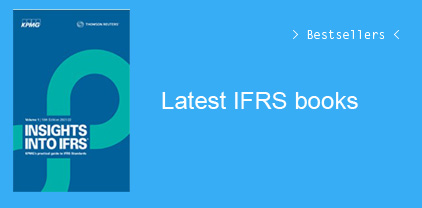Chapter 1: Overview and Introduction 01-24
Scope and Purpose 01-08
GAAP for State and Local Governments 09-14
Applicable Auditing Standards and Requirements 15-20
Guidance in Other AICPA Audit and Accounting Guides and Statements of Position 21-22
Other Sources of Guidance 23
Organization of This Guide 24
Chapter 2: Financial Reporting 01-97
Introduction and Overview 01-06
Historical Perspective 02-06
Governmental Financial Statements 07-53
Management’s Discussion and Analysis 09-10
Government-Wide Financial Statements 11-25
Fund Financial Statements 26-44
Notes to the Financial Statements 45-48
Required Supplementary Information Other Than MD&A 49-52
Special-Purpose Governments 53
Other Financial Reporting Issues 54-59
Other Information and Supplementary Information 54
Prior-Period Comparative Financial Information 55-56
Government Combinations and Disposals of Government Operations 57-59
Fair Value Measurement 60-85
General Principles of Fair Value 61-68
Valuation Techniques 69-71
Inputs to Valuation Techniques 72-75
Fair Value Hierarchy 76-79
Guidance for Fair Value Measurement in Special Circumstances 80-85
Auditing Considerations 86-96
Compliance Requirements 87
Fund and Activity Classifications 88
Major Funds 89
Restricted Assets 90
Notes to the Financial Statements 91-92
Required Supplementary Information, Supplementary Information, and Other Information 93-94
Other Financial Reporting Considerations 95
Accounting and Financial Reporting Alternatives 96
Appendix A—Accounting and Financial Reporting Alternatives in GASB Statement No 34, as Amended 97
Chapter 3: The Financial Reporting Entity 01-39
Introduction 01-03
GASB’s Financial Reporting Entity Standards 04-29
Definition of the Financial Reporting Entity 05-12
Financial Statement Presentation 13-22
Disclosures 23-25
Other Financial Reporting Requirements 26-29
Auditing Considerations 30-39
Reporting Entity 30
Internal Control Over Financial Reporting 31
Audit Procedures 32-33
Separate Component Unit Auditor 34
Presentation of Less Than a Complete Financial Reporting Entity 35
Departures of Component Unit Information From GAAP 36
Nongovernmental Component Unit Use of Private-Sector Standards 37
Changes in the Financial Reporting Entity 38
Other Component Unit Auditing Considerations 39
Chapter 4: General Auditing Considerations 01- 138
Introduction 01- 02
General Principles and Responsibilities 03- 29
Overall Objectives 03
Terms of Engagement 04- 08
Laws and Regulations 09- 22
Auditor’s Communication With Those Charged With Governance 23- 27
Communicating Internal Control Related Matters 28- 29
Auditor’s Risk Assessment and Response to Assessed Audit Risk 30- 66
Planning an Audit 30- 34
Audit Strategy 35- 40
Understanding the Entity, Its Environment, and Its Internal Control 41- 66
Materiality in Planning and Performing an Audit 67- 93
GASB Guidance to Preparers on Materiality Determinations 69- 70
Auditor Materiality Determinations 71- 87
Performing Further Audit Procedures 88- 93
Related Parties and Transactions 94
Group Audit Engagements 95- 121
Other Audit Considerations 122-127
Subcontracting Arrangements 122
Independence Requirements 123-127
Required Supplementary Information, Supplementary Information, and Other Information 128-137
Audit Scope Includes Required Supplementary Information or Supplementary Information 131-132
Required Supplementary Information 133
Supplementary Information 134-136
Other Information 137
Appendix A—Consideration of Fraud in a Financial Statement Audit 138
Chapter 5: Investments, Certain Equity Interests, and Derivatives 01-131
Part I—Accounting, Financial Reporting, and Auditing Considerations for Investments and Certain Equity Interests 04-05
Nature of Transactions 06-17
Compliance Requirements and Deposit and Investment Policies 06-10
Deposit and Investment Risk 11
Internal Investment Pools12
Reverse Repurchase Agreements 13
Securities Lending Transactions 14
Investment Arrangements, Including External Investment Pools 15-17
Accounting and Financial Reporting Considerations 18-55
General Recognition Standards 18-55
Auditing Considerations for Investments and Certain Equity Investments 56-99
Risk Assessment 57
Overall Considerations Relating to Investments and Certain Equity Interests 58-59
Identification of Material Classes of Transactions, Account Balances, and Disclosures 60-63
Identification of Significant Risks Related to Valuation64-67
Determining Audit Strategy for Testing Investments at Fair Value 68-70
Management’s Specialist and the Use of Others in Fair Value Measurement 71-99
Part II—Accounting, Financial Reporting, and Auditing Considerations for Derivative Instruments 100
Nature of Transactions 100-113
Accounting and Financial Reporting Considerations—Derivative Instruments 114-120
Auditing Considerations—Derivative Instruments 121-131
Chapter 6: Revenues and Receivables 01-102
Introduction 01-02
Nature of Transactions 03-09
Accounting and Financial Reporting Considerations 10-88
Accounting 11-68
Resource Flows Statement Classifications 69-85
Financial Position Statement Classifications 86-87
Disclosures 88
Auditing Considerations 89-102
Confirmations 94-97
Estimates 98-99
Tax Abatement Disclosures 100
Confidential Records 101
Other Auditing Procedures 102
Chapter 7: Capital Assets 01-91
Nature of Transactions 01-09
Capital Asset Management 03-08
Compliance Considerations 09
Accounting and Financial Reporting Considerations 10-74
Accounting and Financial Statement Presentation—Government-Wide Financial Statements 13-30
Accounting and Financial Statement Presentation—Governmental Funds 31-32
Accounting and Financial Statement Presentation—Proprietary Funds 33
Accounting and Financial Statement Presentation—Fiduciary Funds 34
Capital Leases 35-38
Capital Asset Impairment 39-44
Modified Approach for Infrastructure Assets 45-53
Specified Conditions Approach for Internally Generated Intangible Assets—Other Than Computer Software 54-55
Specified Conditions Approach for Internally Generated Computer Software 56-59
Interfund Movements and Intra-Entity Transfers of Capital Assets 60-62
Capital Assets Used in Landfills 63
Capital Assets Used in Pollution Remediation 64
Service Concession Arrangements 65-70
Disclosures 71-72
Management’s Discussion and Analysis 73-74
Auditing Considerations 75-91
Capital Asset Records 78-80
Ownership of Infrastructure Assets 81
Useful Lives of Infrastructure Assets 82
Modified Approach for Infrastructure Assets 83-91
Chapter 8: Expenses or Expenditures and Liabilities 01- 126
Introduction 01
Nature of Transactions 02- 10
Accounting and Financial Reporting Considerations 11- 114
General Recognition Standards 11- 17
Specific Recognition and Financial Reporting Standards 18- 60
Expenses Resulting From Previously Incurred Disbursements 61- 65
Liabilities 66- 99
Resource Flows Statement Classifications 100- 107
Financial Position Statement Classifications 108- 109
Disclosures 110- 112
Management’s Discussion and Analysis 113- 114
Auditing Considerations 115- 126
Chapter 9: Interfund, Internal, and Intra-Entity Activity and Balances 01-35
Introduction 01
Nature of Transactions 02-05
Nature of Interfund Activity and Balances 02-03
Nature of Internal Activity and Balances 04
Nature of Intra-Entity Activity and Balances 05
Accounting and Financial Reporting Considerations 06-35
Reporting Interfund Activity and Balances 06-15
Reporting Internal Balances and Activity 16-20
Reporting Intra-Entity Activity and Balances 21-26
Differing Year Ends 27
Auditing Considerations 28-35
Chapter 10: Net Position and Financial Statement Reconciliations 01- 31
Nature of Transactions 01- 04
Financial Reporting Considerations 05- 24
Government-Wide Net Position 06- 08
Proprietary Fund Net Position 09
Governmental Fund Balances 10- 18
Reconciliations—Net Position and Changes in Net Position 19- 21
Fiduciary Fund Net Position 22
Disclosures 23- 24
Auditing Considerations 25- 31
Chapter 11: The Budget 01- 26
Introduction 01- 03
Budgetary Processes 04- 11
Types of Budgets 04- 06
Legal Level of Budgetary Control 07- 08
Encumbrances 09- 10
Budgetary Basis 11
Financial Reporting Considerations 12- 16
Budgetary Comparison Schedules or Statements 12- 13
Disclosures 14- 16
Auditing Considerations 17- 26
Internal Control Considerations 18
Presentation of Budgetary Comparison Information 19- 21
Audit Support for Financial Statement Assertions 22- 24
Budgetary Compliance Considerations 25- 26
Chapter 12: Special-Purpose and State Governments 01- 124
Introduction 01- 03
Financial Reporting Requirements for Special-Purpose Governments 04- 09
Compliance Requirements 10
Specific Guidance for Special-Purpose Governments 11- 89
Hospitals and Other Health Care Providers 11- 13
School Districts 14- 20
Airports 21- 23
Public Housing Authorities 24- 27
Financing Authorities 28- 35
Transportation Systems 36- 37
Utilities 38- 39
Postemployment Benefit Plans 40- 45
Public Entity Risk Pools 46- 50
External Investment Pools 51- 58
Colleges and Universities 59- 89
Specific Guidance for Indian Tribes 90- 94
Specific Guidance for State Governments 95- 124
Nature and Organization of State Governments 96- 99
Specialized Reporting Requirements 100
Reporting Entity Definition 101
Separate Fund, Departmental, Agency, and Program Audits 102
Medicaid 103- 105
Food Stamps 106
Unemployment Compensation Benefit Plans 107
Lotteries 108- 113
Escheat Property 114- 117
State Tuition Programs 118- 119
Multistate Legal Settlements, Including Tobacco Settlement Resources 120-124
Chapter 13: Defined Benefit Pension Plans (Plan & Employer Considerations) 01- 183
Introduction 01- 06
Nature of Transactions 07- 15
Types of Defined Benefit Pension Plans 07- 08
Number of Defined Benefit Pension Plans 09- 10
Relevance of Census Data 11- 15
Part I—Plan Accounting, Financial Reporting, and Auditing Considerations for Defined Benefit Pension Plans Administered Through a Qualifying Trust 16- 95
Accounting and Financial Reporting Considerations 16- 43
Auditing Considerations for the Pension Plan 44- 95
Part II—Employer Accounting, Financial Reporting, and Auditing Considerations: Single and Agent Employers 96- 142
Accounting and Financial Reporting Considerations 96- 108
Auditing Considerations for Single and Agent Employers 109- 142
Part III—Employer Accounting, Financial Reporting, and Auditing Considerations: Cost-Sharing Employers 143- 180
Accounting and Financial Reporting Considerations 143- 165
Auditing Considerations for Cost-Sharing Employers 166- 180
Appendix A—Governmental Employer Participation in Agent Multiple-Employer Plans: Issues Related to Information for Employer Reporting 181
Appendix B—Governmental Employer Participation in Cost-Sharing Multiple-Employer Plans: Issues Related to Information for Employer Reporting 182
Appendix C—Governmental Employer Participation in Single-Employer Plans: Illustrative Schedule of Pension Amounts and Illustrative Auditor’s Report 183
Chapter 14: Defined Benefit Postemployment Benefits Other Than Pensions (Plan & Employer Considerations) 01- 218
Introduction 01- 05
Nature of Transactions 06- 16
Types of Defined Benefit OPEB Plans 06- 08
OPEB Financing (Risk Management) and Administrative Arrangements 09- 11
Number of Defined Benefit OPEB Plans—OPEB Plans Administered Through a Qualifying Trust 12- 13
Relevance of Census Data 14- 16
Part I—Plan Accounting, Financial Reporting, and Auditing Considerations for Defined Benefit OPEB Plans Administered Through a Qualifying Trust 17- 102
Accounting and Financial Reporting Considerations 17- 47
(Plan & Employer Considerations)—Auditing Considerations for OPEB Plans Administered Through a Qualifying Trust 48- 102
Part II—Employer Accounting, Financial Reporting, and Auditing Considerations for Defined Benefit OPEB Plans Administered Through a Qualifying Trust: Single and Agent Employers 103- 149
Accounting and Financial Reporting Considerations 103- 115
Auditing Considerations for Single and Agent Employers Administered Through a Qualifying Trust 116- 149
Part III—Employer Accounting, Financial Reporting, and Auditing Considerations for Defined Benefit OPEB Plans Administered Through a Qualifying Trust: Cost-Sharing Employers 150- 187
Accounting and Financial Reporting Considerations 150- 172
Auditing Considerations for Cost-Sharing Employers 173- 187
Part IV—Employer Accounting, Financial Reporting, and Auditing Considerations for Defined Benefit OPEB Plans That Are Not Administered Through a Qualifying Trust 188- 218
Accounting and Financial Reporting Considerations 188- 201
Auditing Considerations for Employers When the Plan Is Not Administered Through a Qualifying Trust 202- 218
Chapter 15: Concluding the Audit 01- 50
Introduction 01
Misstatements and Audit Adjustments 02- 07
Litigation, Claims, and Assessments 08- 10
Written Representations 11- 15
Related-Party Transactions 16- 19
Going Concern Considerations 20- 31
Subsequent Events 32- 42
Analytical Procedures 43
Communicating With Those Charged With Governance 44- 46
Audit Documentation 47- 50
Chapter 16: Audit Reporting 01- 103
Introduction 01- 03
Materiality 04- 11
Specific Issues in Reporting on the Audits of Governmental Financial Statements 12- 62
Basic Financial Statements 12
The Auditor’s Report 13- 35
Special Situations 36- 62
Required Supplementary Information, Supplementary Information, and Other Information 63- 86
Audit Scope Includes Required Supplementary Information, Supplementary Information, or Other Information 65
Audit Reporting—Required Supplementary Information 66- 73
Supplementary Information 74- 79
Other Information 80- 86
Other Financial Presentations 87- 102
Individual Fund Financial Statements 87- 90
Departmental, Agency, and Program Financial Statements 91
Special-Purpose Regulatory Presentations 92
Summary Financial Information 93- 102
Appendix A—Illustrative Auditor’s Reports 103
Chapter 17: Financial Statements Prepared in Accordance With a Special-Purpose Framework 01- 19
Accounting and Financial Reporting Considerations 01- 06
Auditing Considerations 07- 17
Auditor’s Reports 15- 17
Appendix A—Illustrative Auditor’s Reports 18
Appendix B—Overview of Reporting Requirements for Special-Purpose Financial Statements 19
Chapter 18: Auditor Involvement With Municipal Securities Filings 01- 40
Introduction 01- 06
Auditor Involvement With Municipal Securities Offerings 07- 30
Conditions Affecting Auditor Involvement 08- 20
Auditor Responsibilities When Involved in an Official Statement 21- 27
Engagement Terms Regarding Auditor Involvement 28- 29
Continuing Disclosure Documents 30
Using Government Auditing Standards Reports and References in the Official Statement 31
Letters for Underwriters and Other Requesting Parties 32- 38
References to the Auditor as an "Expert" 38
Attestation Engagements Related to Municipal Securities Issuances 39- 40
Supplement Statement of Position 98-2
Appendix
A Acronyms and Abbreviations
B Category B Guidance
C Overview of Statements on Quality Control Standards
D Schedule of Changes Made to the Text From the Previous Edition
Index of Pronouncements andOther TechnicalGuidance
Subject Index
































